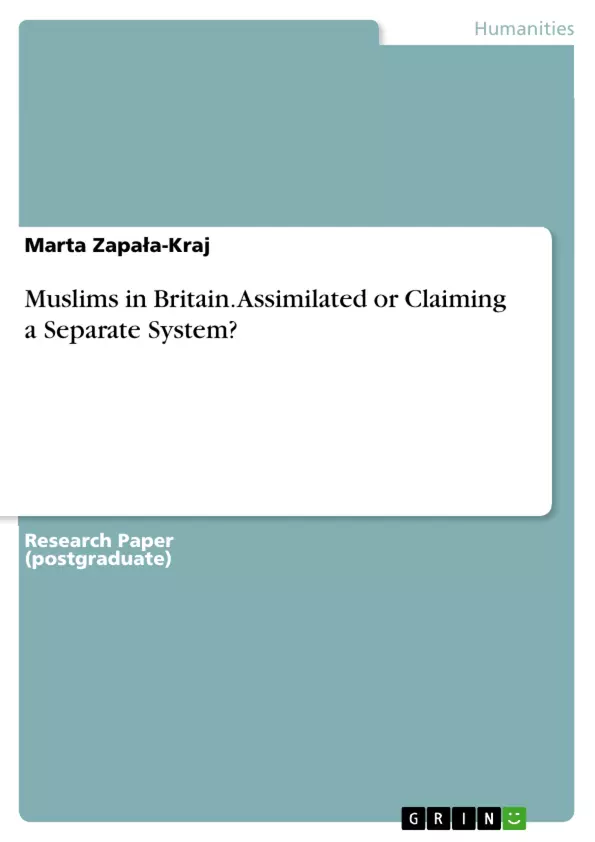The presence of Muslim communities in Europe dates back to the turn of the twentieth century, when such immigrants began arriving from European empires. United Kingdom has traditionally welcomed immigrants, but just as elsewhere, their integration was seen through specific prisms. A community that insists on a primarily spiritually derived identity creates some issues that require adaptation.
Inhaltsverzeichnis (Table of Contents)
- Introduction
- Islam in British Society
- 1.1 Muslims in Britain a Brief Historical Introduction
- 1.2 Muslims in Britain - Assimilated or Claiming a Separate System?
- 1.3 Islam - the World's Second Religion in Britain
- Islam and Women
- 2.1 Women of Islam – Their Role and Rights
- 2.2 Muslim Women in Britain
- British Media and Islam
Zielsetzung und Themenschwerpunkte (Objectives and Key Themes)
This paper aims to explore the presence of Islam in British society, examining its historical development, cultural impact, and representation in the British media. The paper delves into the complexities of Muslim identity in Britain, analyzing the role of Islamic women and the perceptions of Islam within British society.
- Historical Development of Islam in Britain
- Integration and Identity of Muslims in British Society
- Role and Rights of Islamic Women
- Influence of Orientalism on Representations of Islam in the British Media
- Impact of Muslim Immigration on British Society
Zusammenfassung der Kapitel (Chapter Summaries)
The first chapter provides a historical overview of Islam in Britain, tracing its development from the colonial era to the present day. It explores the diverse backgrounds of Muslim communities in Britain and examines the concept of integration within the broader context of British society.
The second chapter focuses on the role and rights of Islamic women, examining their experiences in both the Islamic tradition and in the context of British society. It explores the evolving discourse surrounding gender and Islam, highlighting the diverse perspectives within the Muslim community.
Schlüsselwörter (Keywords)
This paper examines the key concepts of Islam in British society, including Muslim identity, integration, immigration, cultural diversity, Orientalism, gender roles, women's rights, media representations, and the historical evolution of Anglo-Muslim relations.
- Citar trabajo
- Marta Zapała-Kraj (Autor), 2011, Muslims in Britain. Assimilated or Claiming a Separate System?, Múnich, GRIN Verlag, https://www.grin.com/document/288399



